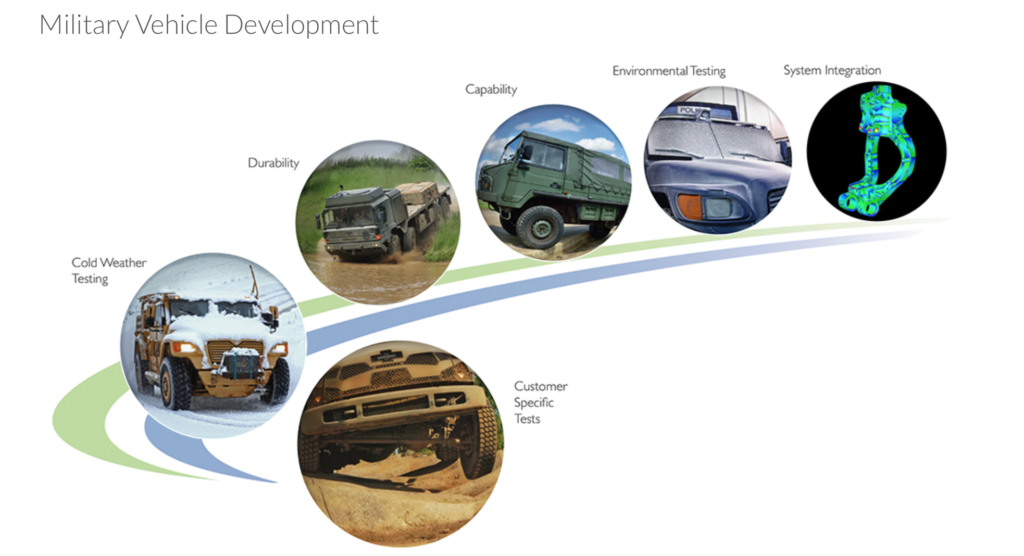Defence Vehicle Dynamics 2018
If you missed the Defence Vehicle Dynamic event in 2018 in Millbrook, or are looking for information on industry development, or whether it is an event worth attending, we have you covered. Here is BiD Masters’ full report on the event, its content, and what professional bidders in Defence can take from it.

Opening Address
The event opened with speeches and a short question and answer session by the Minister for Defence Procurement, Deputy Chief of the General Staff (DCGS); and the CEO of Defence Equipment & Support (DE&S). Each of the speakers returned to two themes, among others: the requirement for increased automation and the importance of technology, particularly software, in maintaining an advantage over adversaries. The Boxer, Warrior Capability Sustainment Project, Ajax, and Challenger 2 Life Extension Project were mentioned, but the emphasis of all three speakers was very much on technical innovation.
Themes
Automation:
Increased automation was outlined as being central to a number of aspirations. Both The Minister for Defence Procurement and DCGS referred to autonomous and remotely piloted/controlled vehicles being able to carry out dangerous tasks more safely, reducing the risk to personnel in an increasingly risk-averse political setting. DCGSalso stressed the potential manpower (and thus financial) savings of increased automation. Additionally, automation was envisaged away from the battlefield, enabling greater efficiency in logistics and support solutions. It remains to be seen how far these ambitions are from being turned into reality as part of a contract. There are a number of solutions to a wide range of problems on offer for the MOD, but there were no concrete indications of how this enthusiasm might translate into the more detailed requirements expressed in an ITT/ITN.
Technology:
Underpinning the move towards greater automation was an emphasis on the solutions that software, particularly artificial intelligence, can play in mitigating the threats on a future battlefield. Numerous systems that can assess and identify threats were exhibited, most intended for incorporation within the armoured vehicle programmes mentioned above. Disruptive technologies were also highlighted as being a key development strand, and this was reflected in some of the exhibits, particularly QinetiQ. The obvious conclusion to draw is that Security Clearance is increasingly likely to be a requirement for involvement in any bids that may take place in this area.
Procurement
CEO DE&S made some interesting points regarding the direction of defence procurement.
Firstly, he stated a target for at least 25% of the procurement budget to be spent on direct interaction with SMEs by 2022, likely in an attempt to bypass the well-established prime contractors. During the Q&A session, he was asked what the figure currently stands at, to which he responded that he didn’t know, so it’s difficult to say how meaningful this commitment is. It is equally difficult to say whether this ambition is driven by a desire to reduce the costs applied by the larger companies, accelerate procurement timelines, and encourage greater competition in the market, or a combination of all three. When asked, he was equally unclear whether this would be via single-source or competitive processes.
Secondly, CEO DE&Sexpressed a desire to reduce the amount of time procurement takes. Again, it was unclear exactly how this would take place. The desire to reduce ‘cycle times’ was stated, presumably compressing the existing procurement processes into a shorter timeframe. The obvious result of this would be shorter bid timeframes.
In the Q&A session that followed, it became clear there is not a particularly mature view of how procurement times will be reduced. Certain structural challenges will remain (due diligence and legislation), but he envisaged a greater role for collaboration and partnering, as well as lessons from the Urgent Operational Requirements procurement process being applied to both competitive and single-source procurement. Exactly how partnering arrangements might be achieved without satisfying the requirements for single-source or competitive contract award remains unclear, as is how this might reduce procurement times. Likewise, he was unclear what lessons from Urgent Operational Requirement (UOR) procurement would be applied, or how.
There are three points BiD Masters takes from this:
- The size of the company does not matter. Being a well-established company and incumbent contractor does not always give you a bid win. Nor does being a SME give you a disadvantage. Your business development and contract capture process has the right to be looked at strategically to give you the best win probability for all contract opportunities. BiD Masters can help you look at your current practices and resources and help you maximise and improve on these.
- It’s never too early to get started. Time pressure on bids is likely to increase. To avoid late night panic, involve BiD Masters as early as possible and follow our REWARD® methodology to help you make best use of these compressed timeframes. When you involve us early enough in your bid process, we can help you plan your resources and the time frame your team needs to work on, and if needed, put a full team of bid specialists, Bid Managers, Bid Coordinators, and Bid Writers at your service. All members of the Bid Master’s team hold security clearances and are ready to be deployed on contracts to help you increase your win probability.